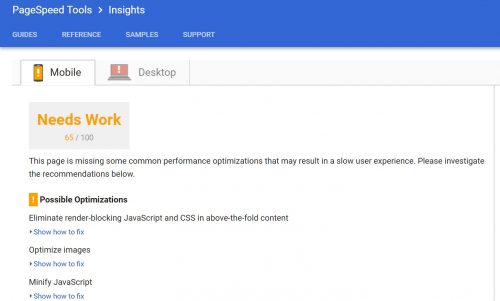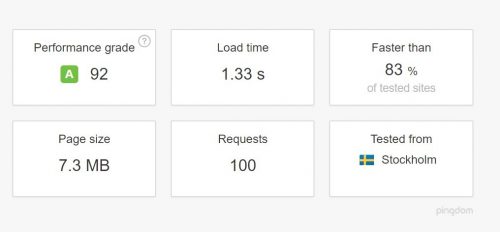
We can’t emphasise enough how important it is to have a company website that loads and serves up its pages quickly. From poor conversion rates to lower Google rankings, slow loading speeds will hold your website back, regardless of the time and money you’ve invested in design, SEO and content.
With the likes of Amazon and Walmart enjoying increased revenue from faster loading speeds, improving your page speed can increase your share of online consumers. Here’s why and how you can improve your website’s speed.
It Matters
It only takes online users around 50 milliseconds to decide whether they will stay on or leave your website. So, if your website is taking too long to load, these quick thinking visitors aren’t going to stick around to see the results.
You don’t need to be a SEO specialist to know it’s important to rank well on Google. The search engine accounts for 77% of the search engine market share. However, whilst good SEO and content can improve rankings, a slow website will drag you down. With Google taking into account UX when ranking websites, a faster loading page which is regarded as a feature that improves UX, improves ranking within search engines.
Test It
Thanks to various online sources, testing your website’s speed shouldn’t take up time or money. Google’s free tool ‘PageSpeed Insights’, offers a detailed analysis of your website website in under a minute. The results can further break down your sites performance for your desktop and mobile users.

A great alternative method for testing website speed, is Pingdom. Simply enter the website URL and choose the location from which you want it tested. Currently, there isn’t the option to test from the UK, but you can find out how long it takes for your website to load for your international clients. Another useful feature the site provides is how well you’re performing compared to other sites test on the Pingdom.

Additionally the likes of GTmetrix and Website Grader are fast and free ways to check your website speed online. Simply enter your website URL, and find out information such as total page size and the number of requests.
Fix It
Once you have checked your website speed, the next task is to improve it. On average, online users expect websites to load in under 3 seconds, so if your website isn’t meeting this expectation you should seriously consider making some changes.
Unsure as to whether you should make a financial investment in your website? Approximately 82% of consumers research a product or service online according to Forbes, so your online presence is just as important if not more important than your store. Consider a slow website as a slow or poor service for customers in your store or office, both are experiences which lower the chance of a visitor returning to your business.
To improve your website speed, building a brand new website is often not necessary. Instead, a redesign with optimised images, a better-configured web server, or even a faster web server can do the trick. In the past, we have solved speed issues for clients by optimising images, enabling compression and reducing or optimising the number of plugins in use on a site. What causes slow loading speed can vary per site, sometimes it’s one factor, often it’s a combination of a few.
Though the technicalities get left to the developers to solve, knowing the importance of a fast website and its effects are something all businesses should be aware of. If you’re after some expert advice to tackle your website performance, our experienced designers would be happy to help.



